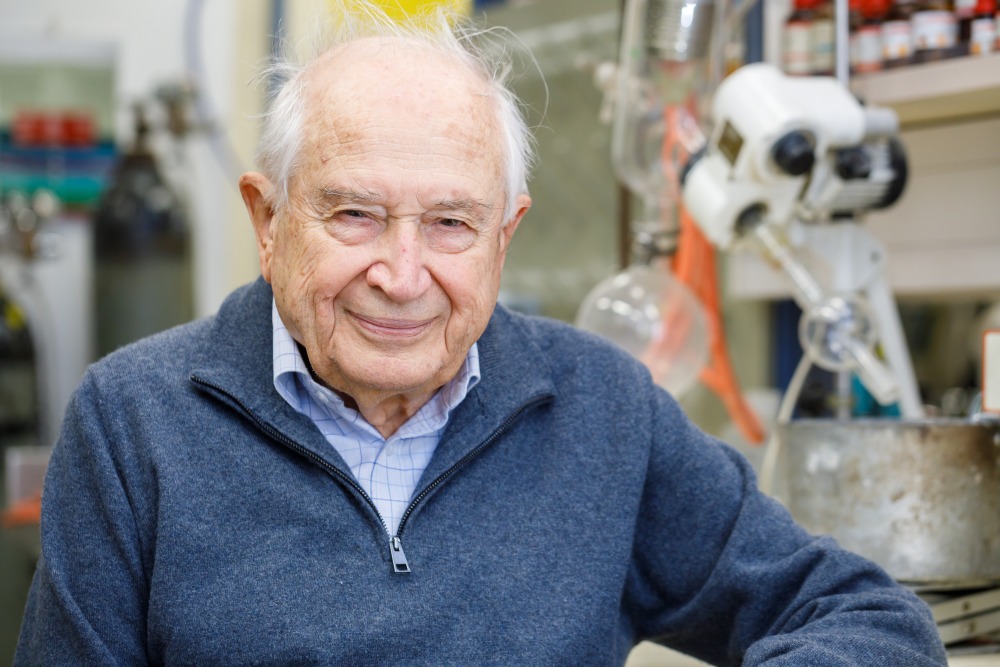Leslie Rebibo, Frušić-Zlotkin, Marina , Ofri, Ron , Nassar, Taher , ו Benita, Simon . 2022.
“The Dose-Dependent Effect Of A Stabilized Cannabidiol Nanoemulsion On Ocular Surface Inflammation And Intraocular Pressure.”. International Journal Of Pharmaceutics, 617, Pp. 121627. doi:10.1016/j.ijpharm.2022.121627.
תקציר Cannabidiol (CBD) is a phytocannabinoid that has a great clinical therapeutic potential. Few studies have been published on its efficacy in ocular inflammations while its impact on intraocular pressure (IOP), a major risk factor for glaucoma, remains unclear. Moreover, due to its lability and high lipophilicity, its formulation within a prolonged stable topical ophthalmic solution or emulsion able to penetrate the highly selective corneal barrier is challenging. Therefore, various CBD nanoemulsions (NEs) were designed and evaluated for stability in accelerated conditions. Further, the optimal formulation was tested on a murine LPS-induced keratitis inflammation model. Lastly, increasing CBD concentrations were topically applied, for two weeks, on mice eyes, for IOP measurement. CBD NEs exhibited optimal physicochemical characteristics for ocular delivery. A specific antioxidant was required to obtain the stable, final, formulation. In vivo, 0.4 to 1.6% CBD w/v reduced the levels of key inflammatory cytokines, depending on the concentration applied. These concentrations decreased or did not affect the IOP. Our results showed that a well-designed CBD ocular dosage form can be stabilized for an extended shelf life. Furthermore, the significant decrease in inflammatory cytokines levels could be exploited, provided that an adequate therapeutic dosage regimen is identified in humans.
Pier Giorgio Puzzovio, Brüggemann, Thayse R, Pahima, Hadas , Mankuta, David , Levy, Bruce D, ו Levi-Schaffer, Francesca . 2022.
“Cromolyn Sodium Differentially Regulates Human Mast Cell And Mouse Leukocyte Responses To Control Allergic Inflammation.”. Pharmacological Research, Pp. 106172. doi:10.1016/j.phrs.2022.106172.
תקציר BACKGROUND: Cromolyn Sodium (CS) has been used in the past as an anti-allergy drug owing to its mast cell (MC) stabilizing properties that impair histamine release. However, additional mechanisms for its clinical actions are likely and might help to identify new roles for MCs and leukocytes in regulating inflammation. Here, using human cord blood-derived MCs (CBMCs), murine bone marrow-derived MCs (BMMCs) and eosinophils (BMEos), and in vivo mouse models of allergic inflammation (AI), additional actions of CS on MCs were determined. METHODS: The in vitro effects of CS on IgE-activated human and mouse MCs were assessed by measuring the levels of pro-inflammatory (tryptase, LTC(4), IL-8, CD48) and pro-resolution effectors (IL-10, CD300a, Annexin A1) before and after CS treatment. The in vivo effects of daily CS injections on parameters of inflammation were assessed using mouse models of allergic peritonitis (AP) (Ovalbumin/Alum- or Ovalbumin/S. aureus enterotoxin B) and allergic airways inflammation (AAI) (house dust mite (HDM)). RESULTS: In vitro, CS did not affect pro-inflammatory effectors but significantly increased the anti-inflammatory/pro-resolution CD300a levels and IL-10 release from IgE-activated CBMCs. BMMCs were not affected by CS. In vivo, CS injections decreased total cell and Eos numbers in the peritoneal cavity in the AP models and bronchoalveolar lavage and lungs in the AAI model. CS reduced EPX release from PAF-activated BMEos in vitro, possibly explaining the in vivo findings. CONCLUSION: Together, these results demonstrate immunomodulatory actions for CS in AI that are broader than only MC stabilization.
Iris Noyman, Ekstein, Dana , Fahoum, Firas , Herskovitz, Moshe , Linder, Ilan , Ben Zeev, Bruria , ו Eyal, Sara . 2022.
“Using Nirmatrelvir/Ritonavir In Patients With Epilepsy: An Update From The Israeli Chapter Of The International League Against Epilepsy.”. Epilepsia. doi:10.1111/epi.17212.
תקציר Presented herein are recommendations for use of nirmatrelvir/ritonavir in patients with epilepsy, as issued by the Steering Committee of the Israeli chapter of the International League Against Epilepsy. The recommendations suggest that patients on moderate-to-strong enzyme-inducing antiseizure medications (ASMs) and everolimus should not be treated with nirmatrelvir/ritonavir; rectal diazepam may be used as an alternative to buccal midazolam; doses of ASMs that are cytochrome P450 (CYP3A4) substrates might be adjusted; and patients treated with combinations of nirmatrelvir/ritonavir and ASMs that are CYP3A4 substrates or lamotrigine should be monitored for drug efficacy and adverse drug reactions.













